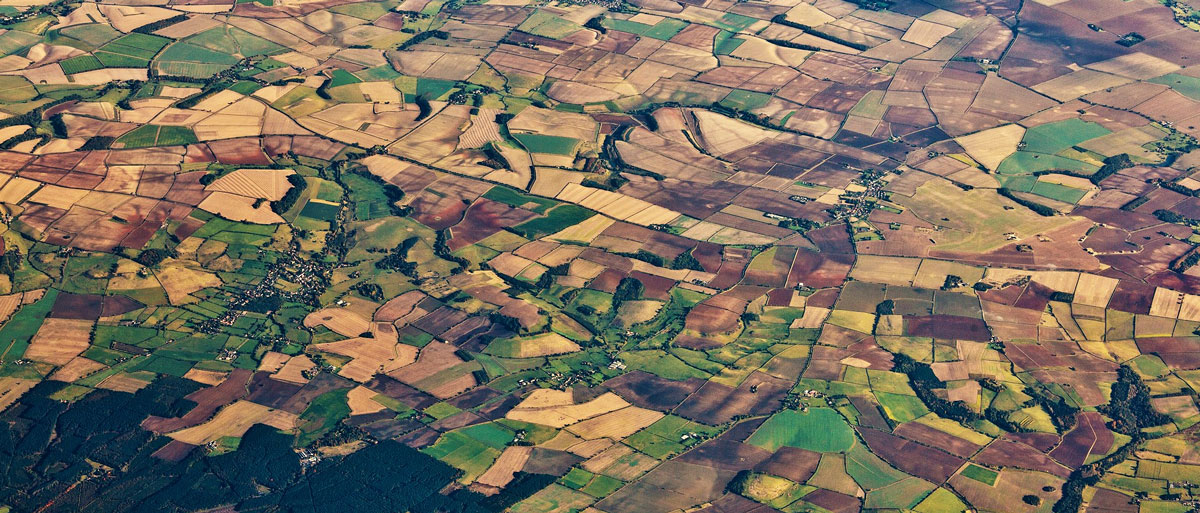
A new article in Ambio concludes that we need to radically change the way we grow our food if we are to attain the twin objectives of feeding humanity and living within planetary boundaries. Photo: Publicdomainpictures.net
Centre director Johan Rockström on agriculture 2.0: A global revolution for sustainability. Video produced by:
Sustainable agriculture
Too intense?
Why global agriculture must become key contributor to sustainable development rather than largest driver of environmental change
- A three-step approach for sustainable intensification of agriculture within planetary boundaries is suggested
- The approach includes better use of natural capital and multi-functional ecosystems to develop productive and resilient farming systems
- Such intensification can deliver more food, better ecosystems, and improved livelihood resilience
In June 2015 centre director Johan Rockström argued that “if we get it right on food, we get it right for both people and planet”. He was definitely on to something.
In an article recently published in Ambio, the scientific journal of the Royal Swedish Academy of Sciences, Rockström and colleagues conclude that we need to radically change the way we grow our food if we are to attain the twin objectives of feeding humanity and living within planetary boundaries.
Rockström is the lead author of the article together with Line Gordon, Hanna Wetterstrand and colleagues from e.g. Australian National University, FAO, Stanford University, CGIAR and Bioversity International.
In the article they argue for the repositioning of world agriculture to becoming a key contributor of a global transition to sustainable development.
Today, the situation is quite the opposite.
“Agriculture is the world’s single largest driver of global environmental change and, at the same time, is most affected by these changes."
Johan Rockström, lead author
Food is key to the global goals
Getting it right on food is key to world development. Actually, sustainable and healthy food is directly or indirectly connected to all of the UN Global Goals. To really deliver on the goals will, however, require an increase in global food production of between 60 and 110 % in a world of rising global environmental risks, Rockström and colleagues argue.
Such a production increase requires intensification on existing land without further jeopardising the livelihood resilience of 2.5 billion smallholder farmers who are the primary stewards of our natural resources.
“Much previous intensification has taken place with production increases being the primary, if not the sole, objective, whose negative consequences were understood after-the-fact and are now well documented,” they write.
Re-defining sustainable intensification
While many recent efforts have defined sustainable intensification of agriculture as “increased yields without adverse environmental impact and without the cultivation of more land”, Rockström and colleagues suggest that such a definition is “either not concrete enough or only partial”.
On the contrary, they ague that a comprehensive definition of sustainable intensification of agriculture in the Anthropocene must have a clear link to the planetary boundaries framework
“World agriculture must now meet social needs and fulfill sustainability criteria that enables food and all other agricultural ecosystem services such as climate stabilization, flood control and nutrition to be generated within a safe operating space of a stable and resilient Earth system,” they write.
In order to sustainably increase productivity in agriculture Rockström and colleagues suggest a three-step approach:
(1) be as resource efficient as possible combining e.g. locally relevant crop and practices that minimize inputs and close nutrient, carbon, and water cycles
(2) adopt practices that build landscape-scale resilience by sustaining ecosystem functions and services, such as water flows and biodiversity
(3) connect thinking, planning, and practice across scales to fully grasp field to biome interactions.
Key strategies for paradigm shift
The three-step approach above must also include improved and more equitable access to knowledge and resources including land tenure, common property, markets, and social relations, the authors suggest. Building on previous studies by colleagues around the world they list a number of key strategies for the much needed paradigm shift.
These include:
• Build robust institutions of small farmers, led especially by women, which enable an equitable interface with both markets and government.
• Adopt circular approaches to managing natural resources (e.g., nutrient recycling) and mixing organic and inorganic sources of nutrients.
• Harness agro-ecological processes such as nutrient cycling, biological nitrogen fixation, and biological pest control.
• Use natural capital (soil, biodiversity, nutrients, water) and multi-functional ecosystems to develop productive and resilient farming systems.
• Assist farmers in overcoming adoption barriers, rendering the ecological approach profitable in the long run.
Implementing these strategies to make intensification really sustainable would need to lead to e.g. a transformation of agriculture from the world’s single largest carbon source to major carbon sink in soils; very low or zero expansion of agriculture into remaining natural ecosystems; and zero loss of biodiversity.
"We need nothing less than a planetary food revolution which, for the foreseeable future, will largely be driven by the 2.5 billion smallholders that provide up to 80 % of the food supply in Asia and sub-Saharan Africa," they write.
Rockström, J., Williams, J., Daily, G. et al. 2016. Sustainable intensification of agriculture for human prosperity and global sustainability. Ambio doi:10.1007/s13280-016-0793-6
Johan Rockström is the director of Stockholm Resilience Centre. He is an internationally recognized scientist on global sustainability issues, where he, e.g., led the recent development of the new Planetary Boundaries framework for human development in the current era of rapid global change.
Line Gordon is Deputy director and deputy science director at the Stockholm Resilience Centre. Her research focus is on freshwater resources, ecosystem services and food production.
Hanna Wetterstrand works as a programme officer for SwedBio, a knowledge interface at Stockholm Resilience Centre on poverty alleviation, equity, sustainable livelihoods and biodiversity.










